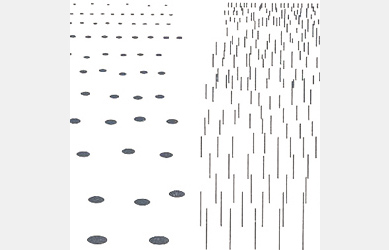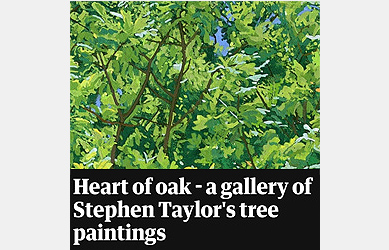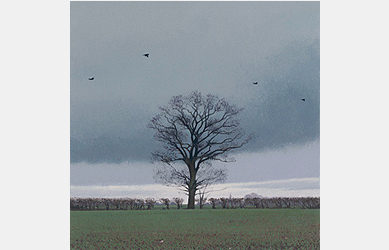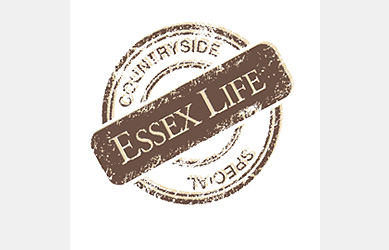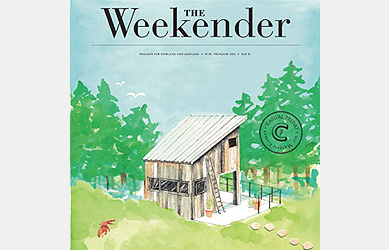Painters like Vermeer and de Hooch used chequered floor gradients - a simple and dramatic form of texture gradient - to map out their domestic world . Outdoors, a machine planted crop can create regular gradients; and its posible to use these for landscape painting.
I think I was drawn to this idea because it has, so to speak, the reverse effect of making the viewer absolutely clear where they stand in space. A secure relationship to the plane is fundamental for everyone. The ground plane affords us our simple animal freedom to move about, and it's representation in art can be a reminder of this reassuring fact. I think this is why I put walking figures in these pictures. Forget space travel and fantasy worlds, the material world is all we have.
*
I first came across the ideas of enviromental affordance and texture gradients in the work of the great experimental psycologist J J Gibson:
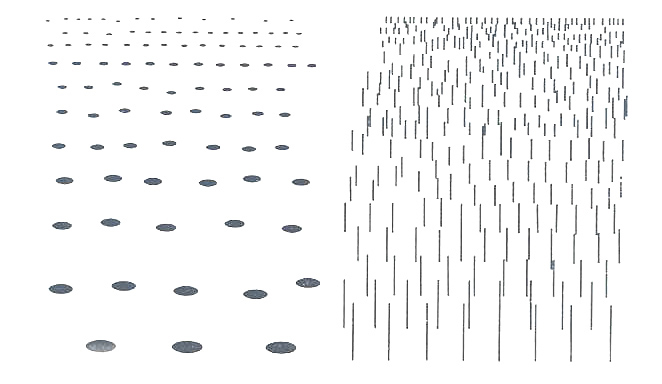
diagrams of texture gradients from J.J.Gibson, The Perception of The Visual World 1950
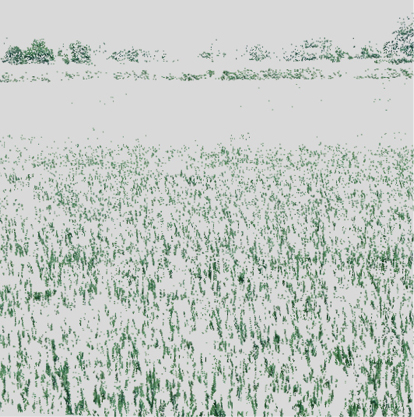
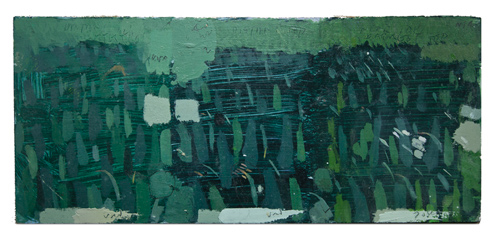
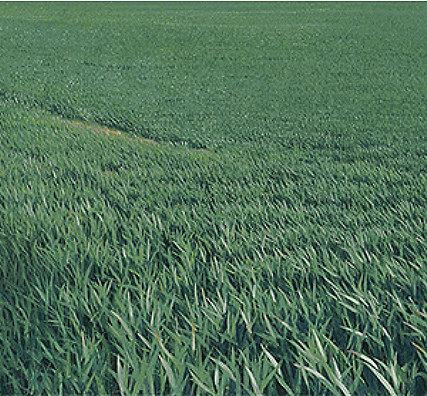
Detail from the finished painting. Each colour is part of a group of similar colours that make a distinct texture - a colour texture. Because these colour-textures also exist as a gradient, they create an enriched sense of recession on the ground plane. The effect is much stronger than in a photograph of the same scene, which would have too many colours and, critically, no clarifying paint execution.
This ground plane contributes to the aesthetic of the painting, designed to create a sense of placement and continuity between spectator and enviroment.
